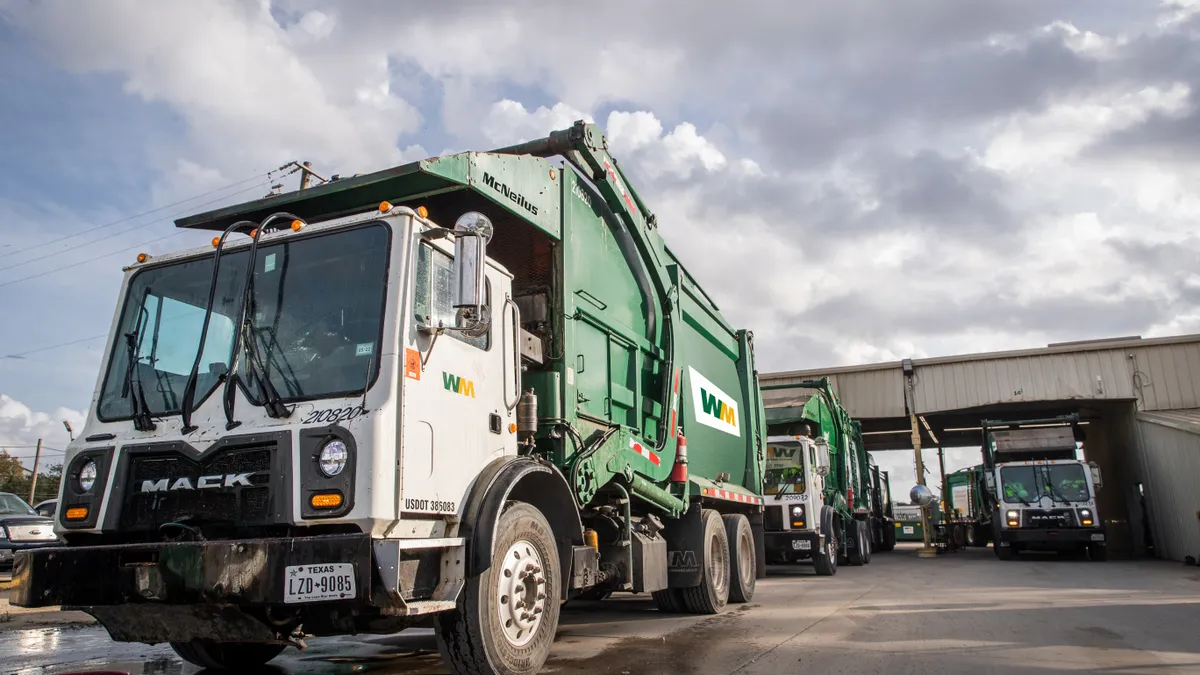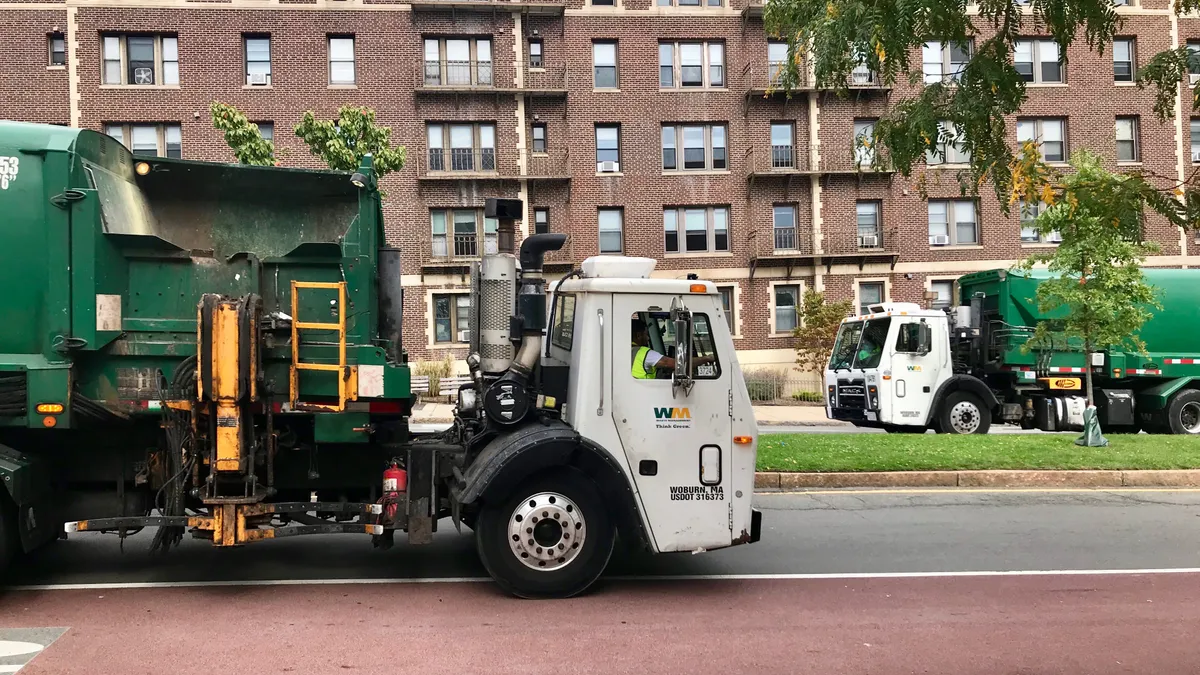- Economic outlook: “We're on track for another solid year and we were right on our plans in the first quarter,” said Fish during a Thursday earnings call. First quarter revenue grew 5%, and organic growth in the collection and disposal business grew 7%. WM expects a “seasonal uptick” in business, and the company will continue focusing on pricing strategies as well as technology investments meant to create permanent cost reductions.
- Pricing: Chief Operating Officer John Morris said he’s “confident” WM will stay on track with full-year pricing expectations for a core price of 6.5% to 7% and yield of about 5.5%. Transfer stations had a 8.9% yield in Q1, a “new high” for that line of business which helped offset increasing labor and transportation costs, said Morris.
- Volumes: Collection and disposal volumes for Q1 increased 0.8% on a workday-adjusted basis, compared to 3.8% in the first quarter of 2022. Morris said landfill volumes “led the way,” with C&D volumes up almost 37% due to hurricane cleanup in Florida. MSW volumes increased by almost 3%. Overall volumes are expected to stay flat through the midpoint of the year.
- Costs: Reported operating expenses were about $3.08 billion in Q1, compared to about $2.9 billion the first quarter of 2022. That’s due mostly to wage increases and inflation that affected costs for repairs, maintenance and subcontractors. Operating margins also faced headwinds from wage inflation, truck delays and the dilutive impact of acquisitions completed late in 2022, said CFO Devina Rankin.
- Labor and retention: WM experienced the best driver retention rate in two years, Fish said, “which translates into even better customer service and optimized cost structure” because tenured drivers are safer, more efficient and reduce overtime costs. However, turnover continues to be a problem. Fish estimates there could be up to 2,000 helper positions “we will choose not to refill.” Meanwhile, wage increases for frontline workers have slowed since late 2021 and 2022.
- Fleet updates: After several years of waiting on back-ordered trucks, WM expects to finally have “a full complement” of up to 1,600 new vehicles delivered this year. Automated side loaders will replace rear-loading models, eliminating the need for a second person. About 70% of worker injuries happen in WM’s residential business line, and Fish estimates that of those, 90% happen on rear loaders.
- Facility investments: WM will bring online two new renewable natural gas facilities and seven “newly automated” material recovery facilities by the end of 2023. As the company previewed in a recent investor day about its major renewable energy and recycling business investments, this will include a new MRF in the Toronto area. Fish described this as “the perfect place” because it’s located in a major growth market in Canada’s largest city.
- Recycled commodities: Q1 recycling revenue was $358 million, down sharply year over year. Fish reaffirmed WM’s 2023 blended commodity price guidance of $70 a ton. In March, that price was closer to $57 a ton, but Fish said the number is likely to improve into April because mill capacity is coming online, helping to drive paper demand. The market is also seeing a “significant uptick” in pricing for plastics and aluminum, and more modest OCC price improvements.

WM sees more cost cutting opportunities through labor attrition, new truck deliveries
The industry’s largest company saw increased expenses during Q1 but remains confident in hitting its annual guidance through pricing and cost reduction efforts.

Recommended Reading
- Q1 earnings results for major waste and recycling companies By Waste Dive Staff • Updated May 23, 2023
- WM could earn more from RNG than from recycling by next year as part of dramatic scale-up By Jacob Wallace • April 5, 2023
- WM boosts planned MRF and RNG spending by $590M, sees signs of inflation easing By Cole Rosengren • Feb. 1, 2023














